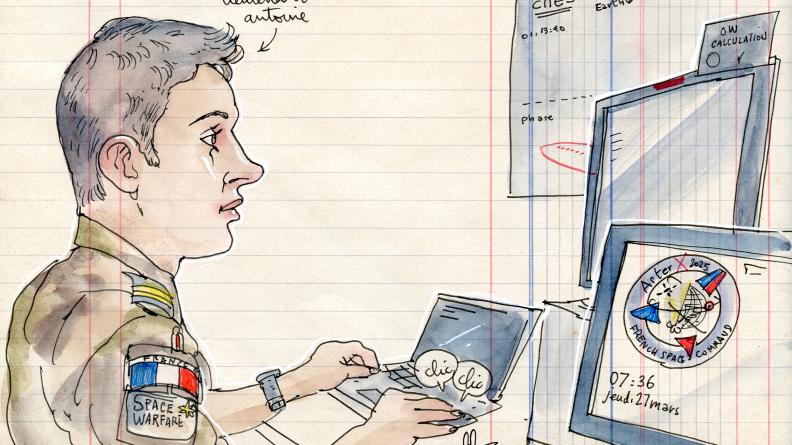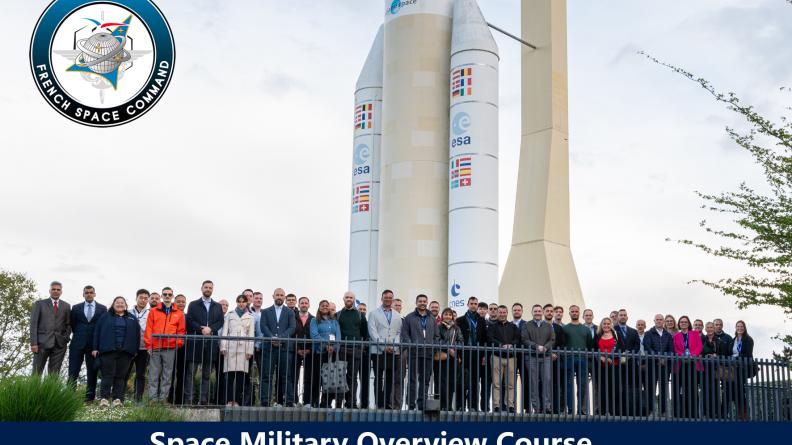Space capabilities
The French Space Command (CDE) is a leading actor in the definition of future military space capabilities, the development of military space programs and innovation.
CERES
The main mission of CERES is to contribute to crisis prevention and anticipation, planning and support for operations. The CERES (Capacités de Renseignement d'origine Electromagnétique Spatial) system comprises :
- a space segment made up of three satellites in low-earth orbit;
- a user ground segment, which prepares satellite programming requests, recovers intercepted signals and produces the location and characterization of electromagnetic transmitters;
- a control ground segment, whose main function is to control the satellites.
The CERES satellites were launched in November 2021, with an initial planned lifetime of seven years.
CSO
The CSO (Composante Spatiale Optique) satellites of the MUSIS (Multinational Space-based Imaging System) program are military observation satellites dedicated to French defense and its partners.
Projected by the National Center for Space Studies (CNES) on behalf of the French Defence Procurement Agency (DGA), they are intended to succeed the Hélios 2 system and contribute to the reinforcement of forces' capabilities in the fields of space intelligence, support and the conduct of operations in theaters of engagement.
France will be provided with three identical satellites, but placed in two different orbits. Combining several visible (panchromatic, color, near-infrared) and infrared spectral bands, they have no equivalent in Europe at this level of resolution.
SYRACUSE IV
The SYRACUSE IV (SYstème de RAdioCommunication Utilisant un SatellitE) constellation, comprising two satellites, inaugurates the new generation of military telecommunications satellites for the French armed forces, replacing the two SYRACUSE III satellites. More flexible in use, offering higher throughput and greater resistance to various threats, SYRACUSE IV will enhance the armed forces' ability to communicate autonomously over very long distances.
YODA
The YODA demonstrator (Yeux en Orbite pour un Démonstrateur Agile - Eyes in Orbit for an Agile Demonstrator) aims to experiment with operations in geostationary orbit and to test different payloads, so as to develop, before 2030, a capability to detect, identify, protect and, if necessary, act, in line with France's engagements, to guarantee space as a common good and keep it sustainable and accessible to all.
GRAVES
The GRAVES (Grand Réseau Adapté à la Veille Spatiale) space surveillance system, which went into operational service in 2005, detects objects in low orbit, between 400 and 1,000 km in altitude. It consists of a fixed radar system located at two sites, which observe targets crossing the sky. Renovation of the current GRAVES will be completed in 2022. Its successor is scheduled for 2025, with full capacity by 2030, and will be able to see smaller objects further out.
SATAM
With its three trajectography radars, SATAM (Système d'Acquisition et de Trajectographie des Avions et des Munitions) is designed to track munitions at firing ranges, and is used for space surveillance in low earth orbit (LEO). Without watch (GRAVES), no tracking (SATAM).
Related contents
SIAE 2025: Cercle de Confiance Espace officially presented
During the SIAE (Salon International de l'Aéronautique et de l'Espace), the French Space Command brought together members of the Cercle de Confiance Espace, on the air and space force chalet.
July 01, 2025

AsterX 2025 illustrations
Known by his pseudonym "Lapin", this French Air and Space artist was on the floor of the AsterX 2025 exercise to create illustrations.
May 14, 2025

The Space Military Overview Course is back for a third edition!
From April 14 to 18, 2025, the French Space Command's Training Centre for Military Space Operations (CFOSM) organized the third edition of the Space Military Overview Course (SMOC) at the Diagora Labège convention center in Toulouse.
April 23, 2025
